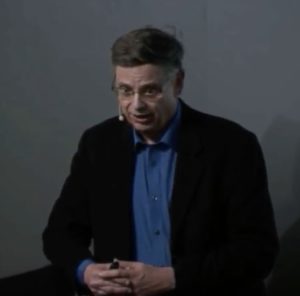 In this video from the NVIDIA booth at SC17 in Denver, Richard Loft from NCAR presents: An Agile Approach to Building a GPU-enabled and Performance-portable Global Cloud-resolving Atmospheric Model.
In this video from the NVIDIA booth at SC17 in Denver, Richard Loft from NCAR presents: An Agile Approach to Building a GPU-enabled and Performance-portable Global Cloud-resolving Atmospheric Model.
The strategy of the National Center for Atmospheric Research (NCAR) for supporting its earth system modelers is through the development of community codes – applications that are not only freely downloadable but also contain components developed by a distributed group of contributing authors. Users of community models expect them to not only work, but to also run well on a variety of platforms, particularly the ones chosen by their home institutions. The divergence of computer architectures that occurred with the introduction of heterogeneous systems with accelerators, such as GPUs has made the issue of achieving performance portability for community models quite challenging. The time required to optimize code also play well with the neither complexity of the code nor the codes complexity. Thus the objectives of NCAR’s exploration of accelerator architectures for high performance computing in recent years has been to 1) speed up the rate of code optimization and porting and 2) understand how to achieve performance portability on codes in the most economical and affordable way.
In this talk I will give a high-level overview of the results of these efforts, and how we built a cross-organizational partnership to achieve them. Ours is a directive-based approach using OpenMP and OpenACC to achieve portability. We have focused on achieving good performance on three main architectural branches available to us, namely: traditional multi-core processors (e.g. Intel Xeons), many core processors like the Intel Xeon Phi, and of course NVIDIA GPUs. Our focus has been on creating tools for accelerating the optimization process, techniques for effective cross-platform optimization, and methodologies for characterizing and understanding performance. The results are encouraging, suggesting a path forward based on standard directives for responding to the pressures of future architectures.”




